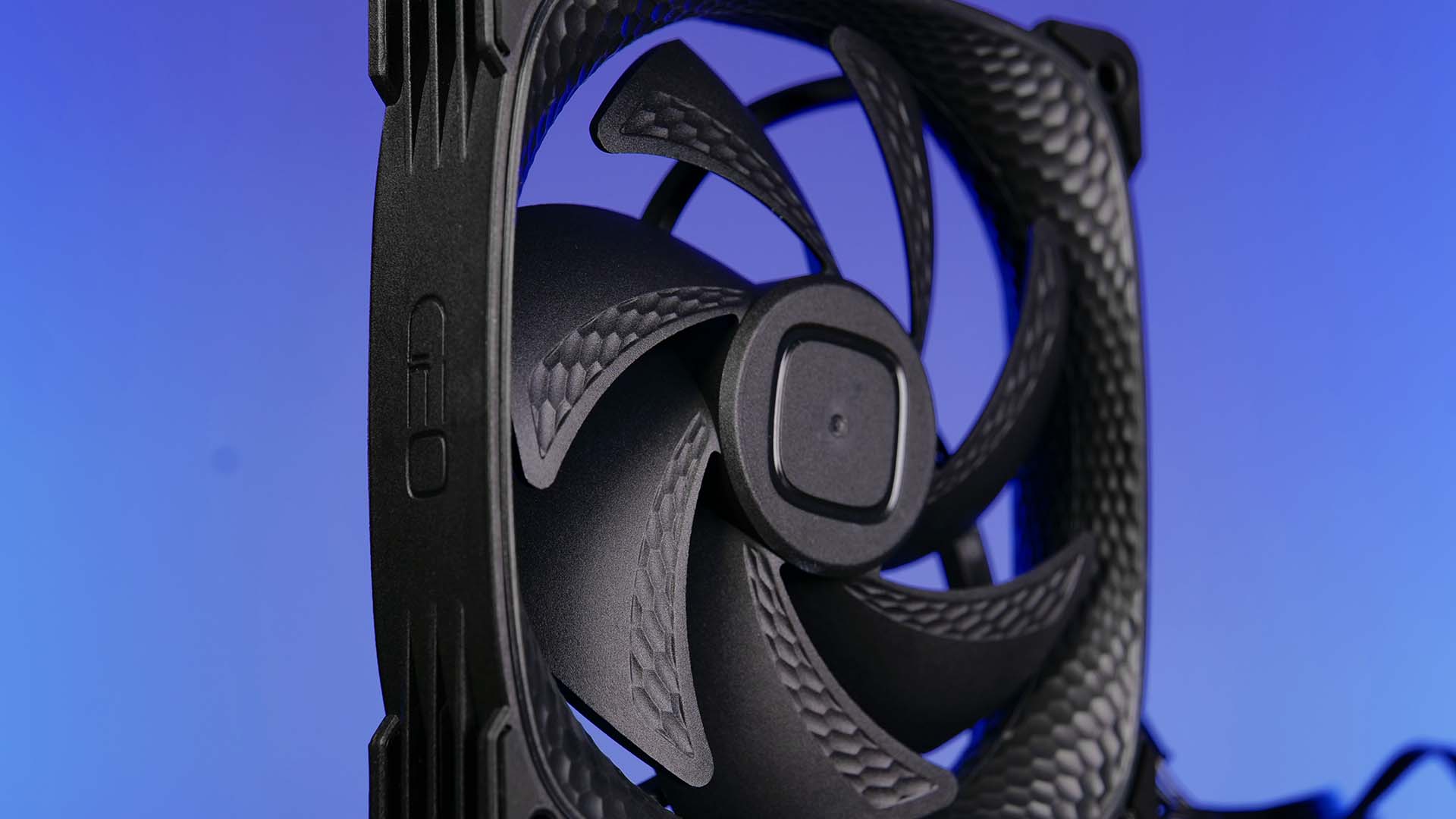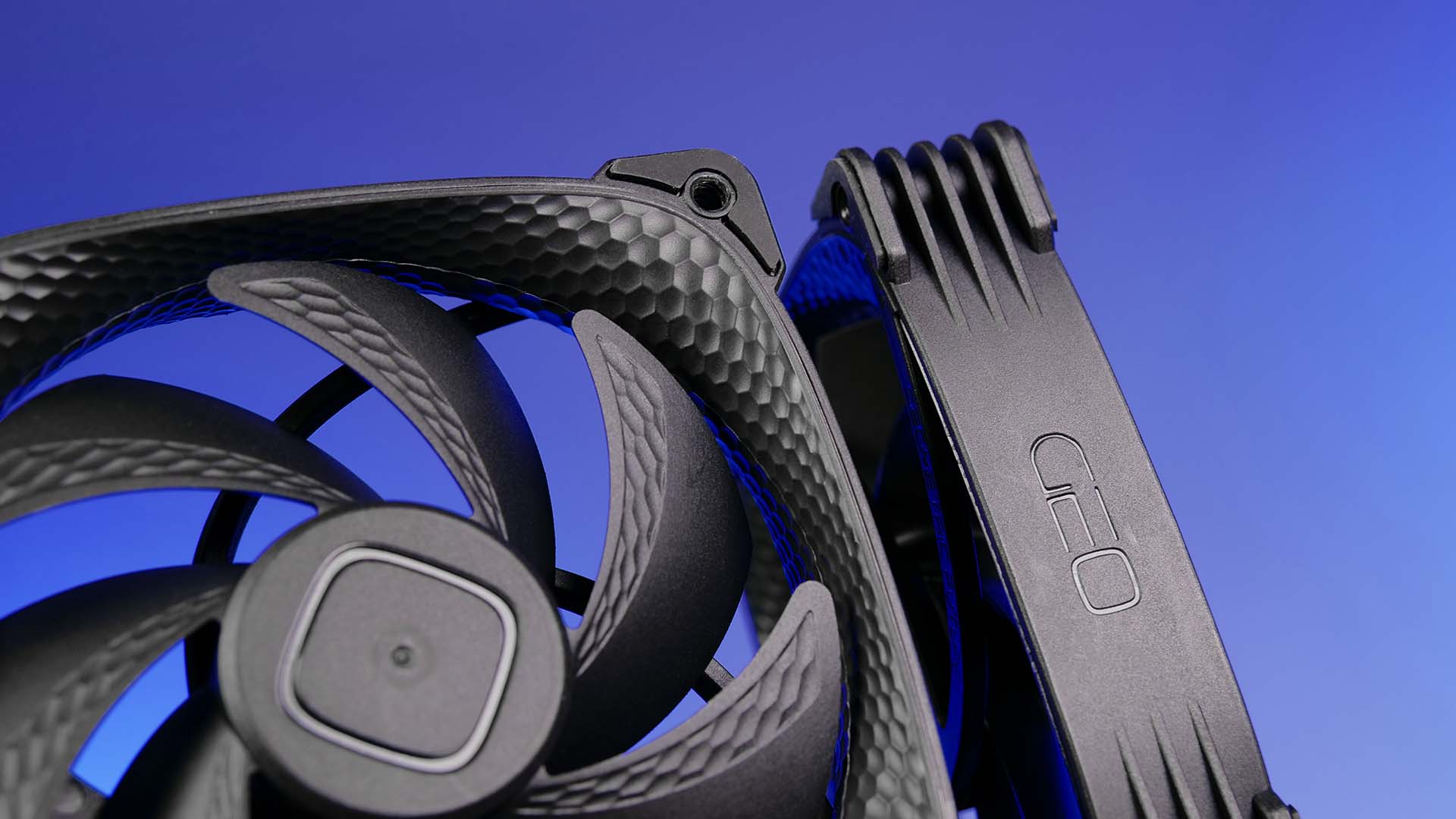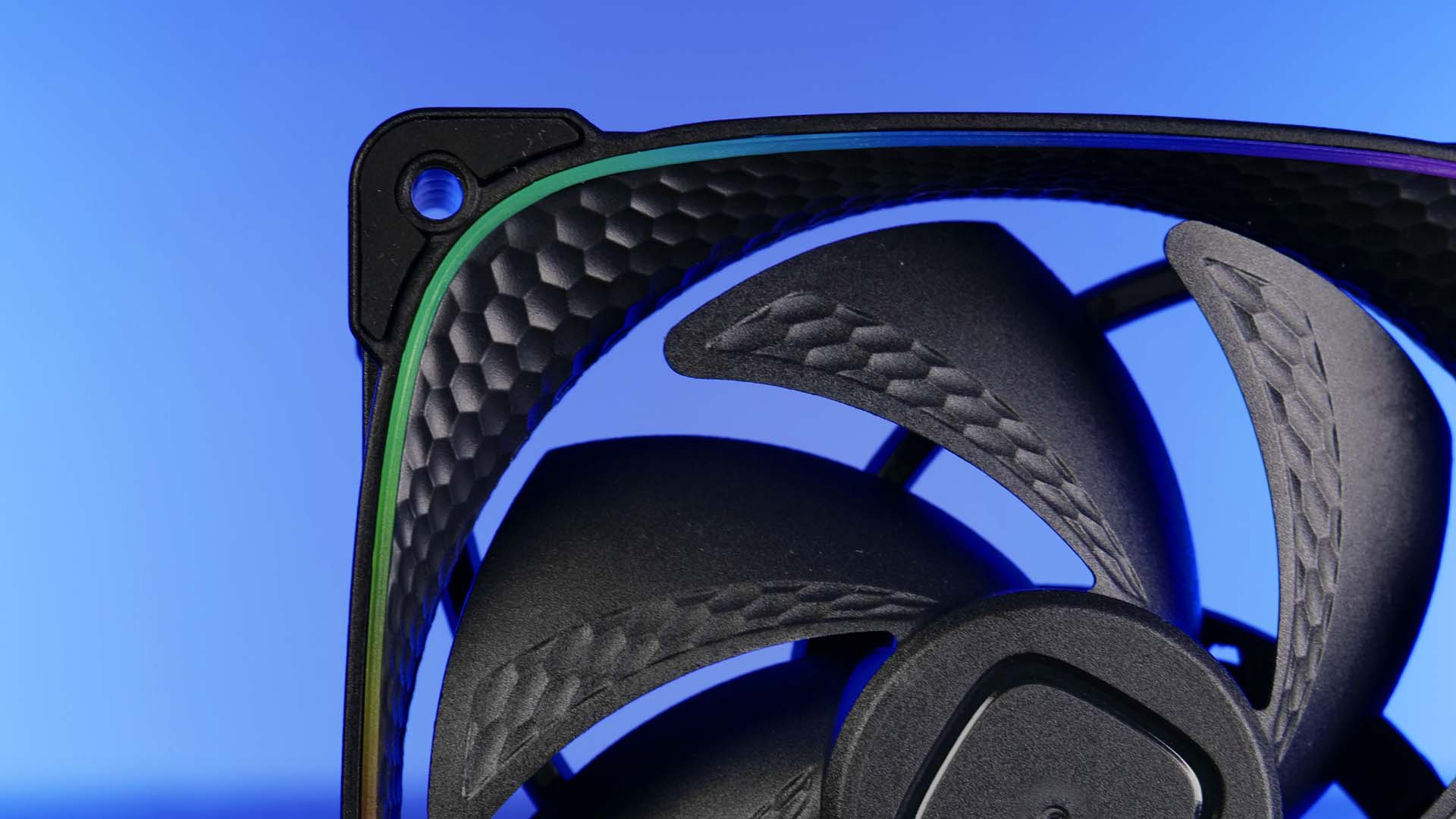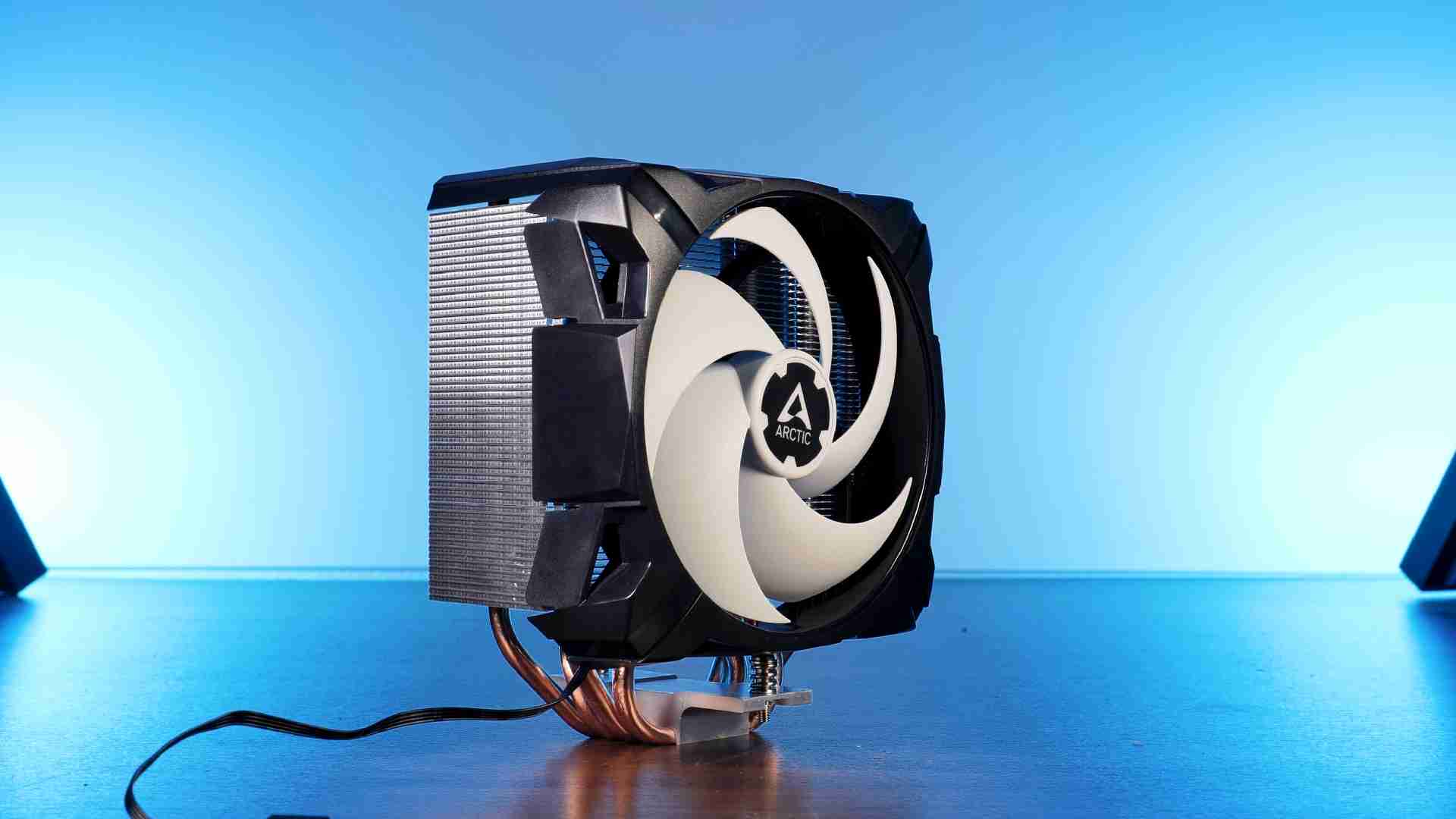Geometric Future Squama 2503 RGB Review
Introduction
Geometric Future is not only known for slapping leather on top of a case. Their Squama line of fans promises to be different! And they are. Powered by a little hexagonal-shaped pattern, they should deliver high airflow while keeping the noise low! Let's find out if they can truly deliver!
Positive
- Respectable Noise-to-Performance
- Excellent Build Quality
- The cleanest ARGB Stripe we've ever seen
- Though-through cabling system
Neutral
Negative
- Could be a bit quieter
What's in the Box?

Geometric Future's Squama 2503 Line of fans are available in different colors and amounts. You can choose between the Black or the White version, both of which are available in a simple 1x package, or in a 3x package. For the purpose of this review, we will focus solely on the Black Tripple-pack model.
Once the surprisingly well-designed package is opened up, we will find the first perk of those fans, their well-thought-through cabling.

Inside each Squama triple-pack, we will find 3x Squama 2503 ARGB Fans, as well as 3x cable extensions. However, instead of being solely cable extensions, each of them offers a splitter at the fan end. This makes it incredibly easy to extend the pack or install each of them using a single header on the motherboard. However, additionally to the included extensions, each squama fan comes with a 15cm long PWM cable attached to the fan, with its own splitter.
Once we calculated all of them together, we realized that if we were to use every cable that came out of the box, we would end up with 4x available PWM headers ready to use. Though please do not run more than 3-4 Fans on a single header.

Aside from the PWM splitter overdose, a Squama 2503 Triple-Pack also includes a couple of screws and Geometric Future's Sata-Powered ARGB controller.
With 2 ARGB ports and a 2-pin Reset port for Case-Button control, it is the perfect addition in case you do not have an available ARGB header available on your motherboard.
In case you do have one and you favor Software controlled ARGB, you can use the included Proprietary-to- 3-Pin ARGB adapters to connect each fan to your Motherboard.

Down below we also added a short summary of the Squama 2503's Specs:
| Name |
Geometric Future Squama 2503 (B) |
| Size | 120x120x25mm |
| Speed | 2000RPM |
| Airflow | 69.11CFM |
| Static Pressure | 2.92mm/H2O |
| Noise | <29dBa |
| Connection |
PWM ARGB (after adapter) |
| Bearing | Not Specified |
| RGB |
ARGB Line on the Front Side ARGB Line on the Back Side |
Installation
Installing a Squama 2503 ARGB fan is a fairly easy process. Position the fan wherever you want it to be, and screw in the included screws. Each corner of the fan is protected by some rubber for some additional noise absorption.
With this step done, we just need to connect them.

Each Fan comes with a 15cm long PWM cable with an additional splitter. By using one of the included extensions, we can enlarge this to a total of 65cm with 2 new PWM headers being added.
However, in case you would like to install multiple Squama fans in a row, we can make use of the PWM splitter at the Fan end. The 15cm long splitter is sized in a way that you can daisy-chain multiple fans in a row whilst keeping the amount of overhanging cable to a minimum.

The same applies to the ARGB connection. By daisy-chaining one fan to the other one, we end up with a surprisingly clean installation. For the ARGB however, do keep in mind that the Squama 2503 Fans are using a proprietary port which is being adapted back to 3-pin ARGB by using one of the included extensions.
Appearance

Geometric Future's Squama 2503 Fans are looking incredibly interesting, to say the least.
The fan blades are designed using 7 slightly bent Fan blades. In contrast to Geometric Future's 2505, they are definitely bent heavier, but not quite like Arctic's P12s.

The interesting aspect, however, is Geometric Future's Squama Aerodynamic fan frame design. The inside of the fan frame and the end of each wing is plastered with little hexagonal notches. Similarly to Noctua's Microstructures, those little indentations are designed to avoid the creation of turbulences and thus allow the fan to push the air through the fan without additional restriction. Resulting in better airflow and lower noise.

Another outstanding aspect about those fans is their ARGB implementation. The back- and front sides of the fan have a very thin ARGB strip going all around the fan with rounded-off corners. Although this is nothing new in this industry, we immediately noticed the outstanding clean-ness of the ARGB effect. In every imaginable mode, the transitions between color changes, or flow-like effects, were outstandingly clean.
Unfortunately, there is nothing said about the number of LEDs that Geometric Future used inside those fans, however, to get this level of cleanness, we assume that the amount of surprisingly high.
Benchmark
We benchmarked the Squama 2503 using our usual Test-setup.
Whilst letting them spin at 100% of their 2000RPM, they managed to keep the CPU at 48.2°C. This places them right next to bigger fans like the Arctic P14 and F14, and shortly behind Arctic's BioniX P120 ARGB.

On the Noise-to-Performance side, the octagonal inlets were able to show off some results.
While they did not turn out to be benchmark toppers, they did perform quite respectively. Overall, their performance was comparable to Fans such as Arctic's P12 ARGB.

Conclusion

Overall, we are quite happy with Geometric Future's Squama 2503. Compared to their Squama 2505, they are definitely better suited for general use cases, and their performance ended up being similar to an Arctic P12 ARGB, which is indeed a respectable result.

However, they did score some major points in 3 categories.
The first point would be their thought-through cabling approach. Usually, you can expect to get a cable connected at the fan side, with or without a splitter, or you'll get a shorter cable with an included extension. For the Squama's, you'll get both. Which we believe to be great.

The second aspect was their build quality. We are uncertain if their octagonal-shaped in-and outlet helped with this, but the fan frame and the fan as a whole feels incredibly sturdy and doesn't bend as quickly as other fans in this performance and price category.
The last point would be the incredibly clean ARGB implementation. With many fans out there using a similar approach, we must say that this implementation is one of the cleanest we have seen so far.
To put it short, we are happy with how they turned out. And considering their performance, we believe that going for some of those is no mistake at all.


Akasa Soho AR Review
As part of their new Performance & Good-Looking Soho Lineup, Akasa recently released their newest SOHO AR fans. Lets take a l
Read More
Arctic Freezer A35 / i35 Review
Arctics newest Freezer 35 lineup of CPU Cooler promises a tailor-made cooling experience for exactly the platform of your cho
Read More
Nouvolo Steck 2 Review
Nouvolo is known to create unheard-of minimalistic, versatile, and modular cases. The Steck 2 is the next level! Lets take a
Read More
Alphacool Core 140 3200RPM Review
As the last model out of Alphacools Core Series of all rounder fans, we have the 3200RPM quick 140mm model. Although the 2500
Read More